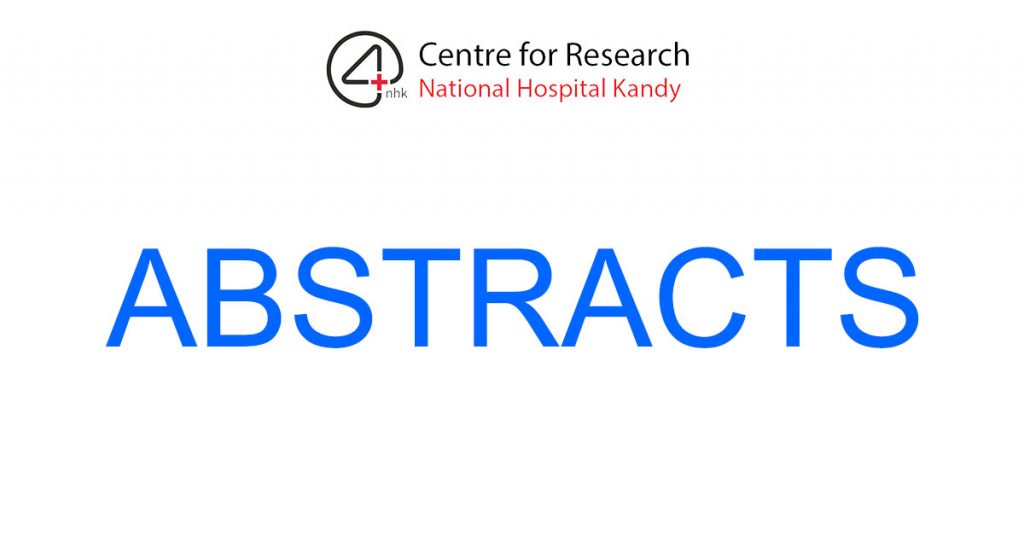Comparison of biochemical characteristics between an endemic and a nonendemic area for CKDu Sri Lanka.
A Medagedara1, Pasan Hewavitharane2, Rohana Chandrajith3, Hemalika T K. Abeysundara4, RO Thatil5, S Thennakoon6, Buddhisha Mahanama2, N Weerasuriya7, A Thilakarathne7, Nishantha Nanayakkara2
1 Center for Research, National Hospital, Kandy; Department of Fundamentals of Nursing, Faculty of Nursing, University of Colombo, Sri Lanka
2 Center for Research, National Hospital, Kandy, Sri Lanka
3 Department of Geology, Faculty of Science, University of Peradeniya, Sri Lanka
4 Department of Statistics and Computer Sciences, Faculty of Science, University of Peradeniya, Sri Lanka
5 Department of Crop Sciences, Faculty of Agriculture, University of Peradeniya, Sri Lanka
6 Department of Community Medicine, Faculty of Medicine, University of Peradeniya, Sri Lanka
7 Provincial Director of Health Services, Central Province, Sri Lanka
Abstract
Introduction
Chronic kidney disease with uncertain etiology (CKDu) was first recognized in the 1990s in Sri Lanka. Considering the distribution of CKDu in the country, clusters of endemic and nonendemic areas can be identified. This study was carried out to compare the biochemical characteristics between CKDu endemic and nonendemic areas in Sri Lanka.
Materials and Methods
A cross-sectional study was carried out among randomly selected males between the age category of 30 and 60 years in selected villages of Wilgamuwa (endemic) and Hanguranketha (nonendemic), located in the dry and wet zone, respectively.
Results
The total participation percentage from the endemic area was 74.7% (224 out of 300 invitees). Out of 150 participants invited from the nonendemic area, only 100 participated in the study cohort. There was a striking difference between the two areas in serum creatinine levels (P = 0.001). When considering the behavioral patterns of the two study areas, the main occupation was farming and there was no significant difference between the behaviors of the people in the selected areas. A significant number of participants (n = 31, 13.8%) from the endemic area had high serum creatinine levels with a mean of 109 μmol/L (standard deviation [SD] = 66.41) (normal: 90–116 μmol/L). Whereas, in the nonendemic area, only 3 (3%) participants had elevated creatinine levels with a mean value of 85.41 μmol/L (SD = 18.78). A significant difference was observed in the two groups in the mean values of serum creatinine levels (P = 0.001). The mean value of random blood sugar (RBS) was 113.56 mg/dL (SD = 44.38) and 119.10 mg/dL (SD = 50.48) in endemic and nonendemic areas, respectively. There was no significant difference between the mean values of RBS (P = 0.2). The mean serum cholesterol was slightly higher in Wilgamuwa (119.26 mg/dl, SD = 45.31) compared to Hanguranketha (189.02 mg/dl, SD = 45.09). However, that was not statistically significant (P = 0.6).
Conclusions
Serum creatinine is remarkably increased in CKDu endemic areas. RBS and serum cholesterol are less significant according to the endemicity of CKDu.
Keywords : Chronic kidney disease of unknown etiology, endemicity, Hanguranketha, serum creatinine, Wilgamuwa

